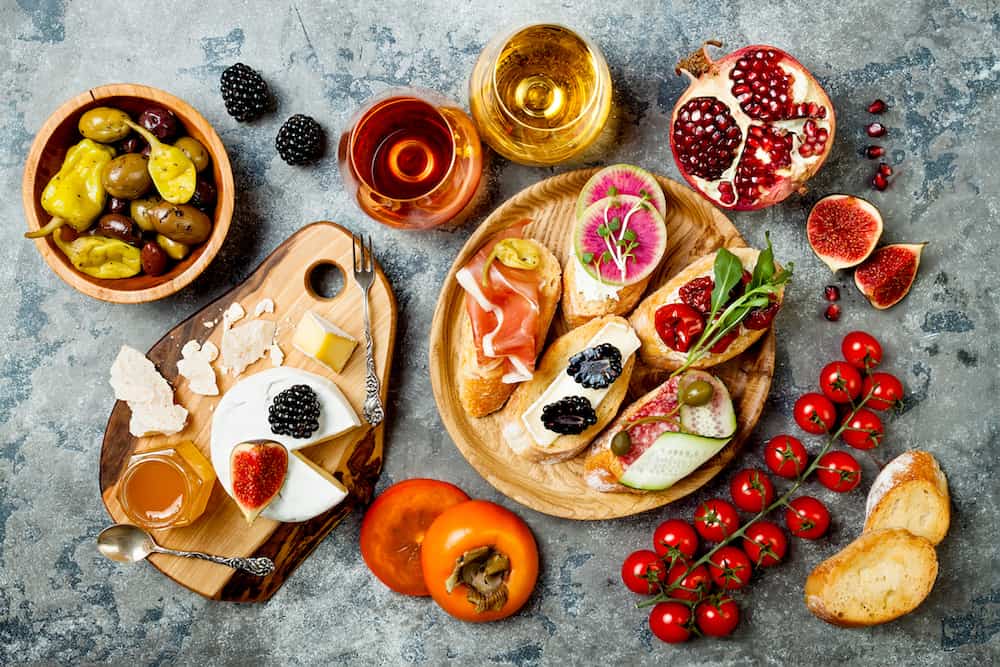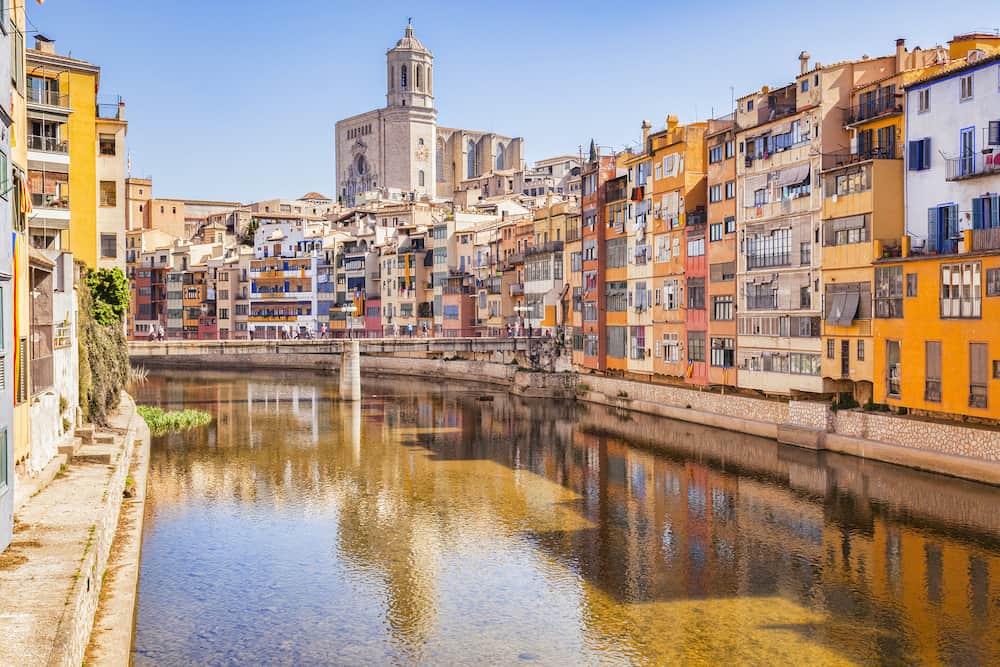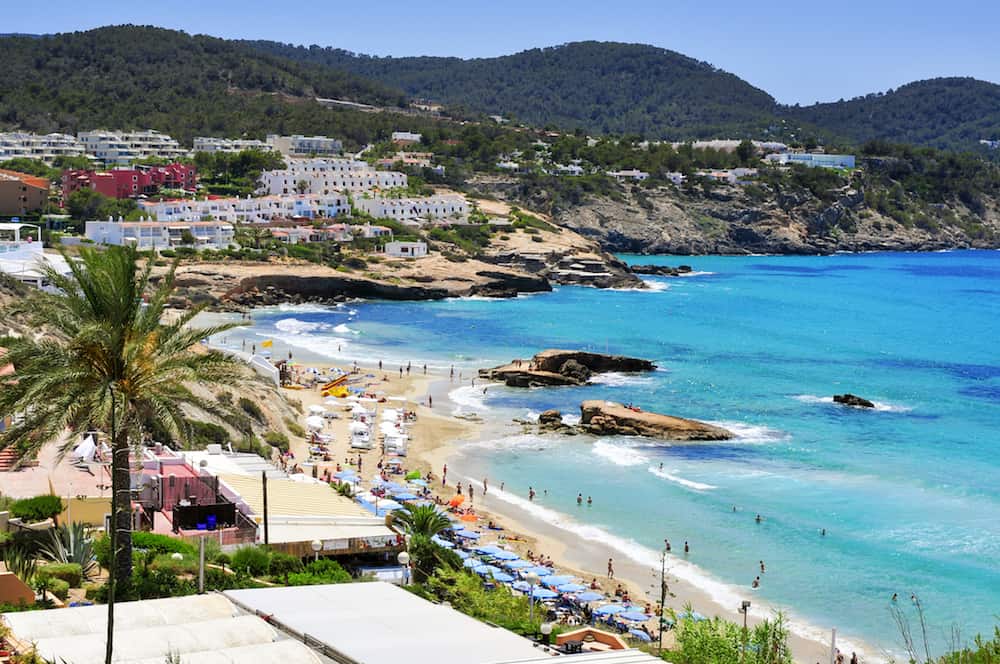Top 10 dishes to try in Spain
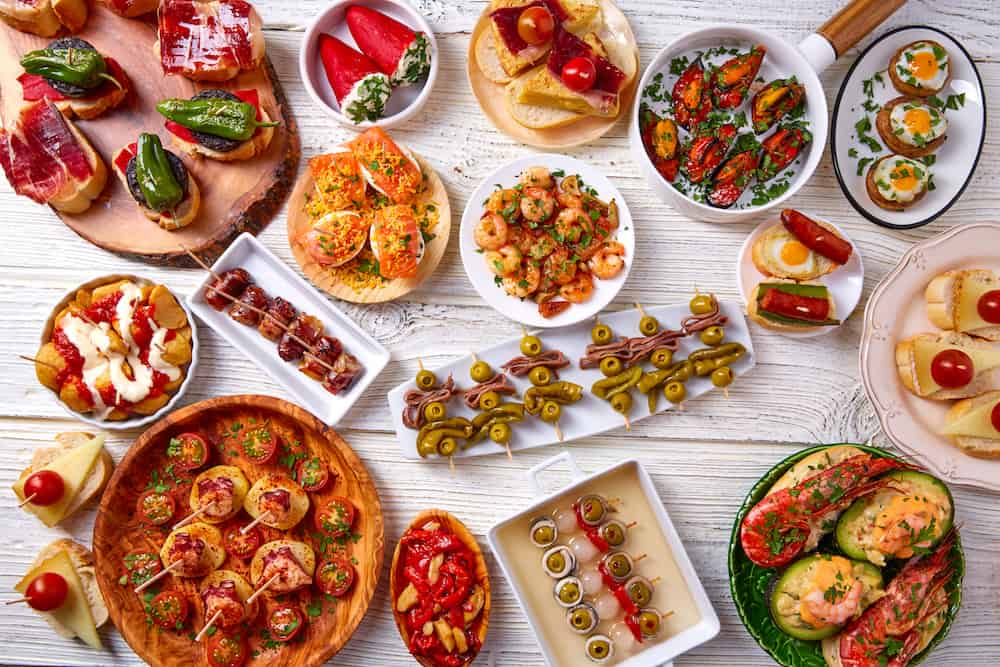
Today we will take you on a gastronomic journey across Spain through 10 of the mouth-watering dishes that should be on your gourmet wish list.
Spain has a rich heritage of cuisine, which varies from region to region, and each has its own signature dishes. There is more to Spain than Jamón and Paella, and for a long time, Spain has been one of Europe’s best-kept secrets with regards to culinary specialities.
For those who want to experience the best that Spain has to offer, here is the ultimate list of Spanish dishes for epicureans.
This is by no means an exhaustive list as there are so many amazing regional dishes that it would provide an endless gourmet journey of discovery. However, you must be warned that some dishes may be a little adventurous for tourists, so they are not for the faint-hearted!
Plan your trip?
Avoid hidden fees in the exchange rate while withdrawing from millions of ATMs abroad, paying in restaurants and shops, and buying your accommodation and flights using the Wise Card. You can hold up to 40+ currencies at once to spend in in over 150 countries, and convert them in real time with the free Wise app.
Need help planning your trip from start to finish? Check out these helpful links:
- Cheap flights
- Savings on accommodation from hostels to luxury hotels
- Affordable car rental options
- Affordable sightseeing tours and day trips
- Travel Adapter – All in one so you don’t have to carry a bunch around
- Don’t be silly and forget Travel Insurance! Get hurt and you’ll regret it…
This post contains some affiliate links for your convenience. Click here to read my full disclosure policy. You can also read our content/editorial policy here.
1. Paella in Valencia
One of the most famous dishes and a personal favourite, this article couldn’t be written without mentioning this classic dish.
Paella is not a dish that is cooked well in any city in Spain and to try the original and best paella, one must venture to Valencia.
The Valencian paella was traditionally made with rabbit, but the most popular version is with seafood.
A thin layer of rice cooking with a flavourful, bubbling stock in the special paella pan or “paellero” creates something called “soccarat” which is the burnt crispy crust at the bottom of the rice, this is considered a delicacy.
However, many other rice dishes can’t technically be classified as paella but are cooked in the same paella pan using the same technique, I would highly recommend Arroz negro (black rice) which is to die for.
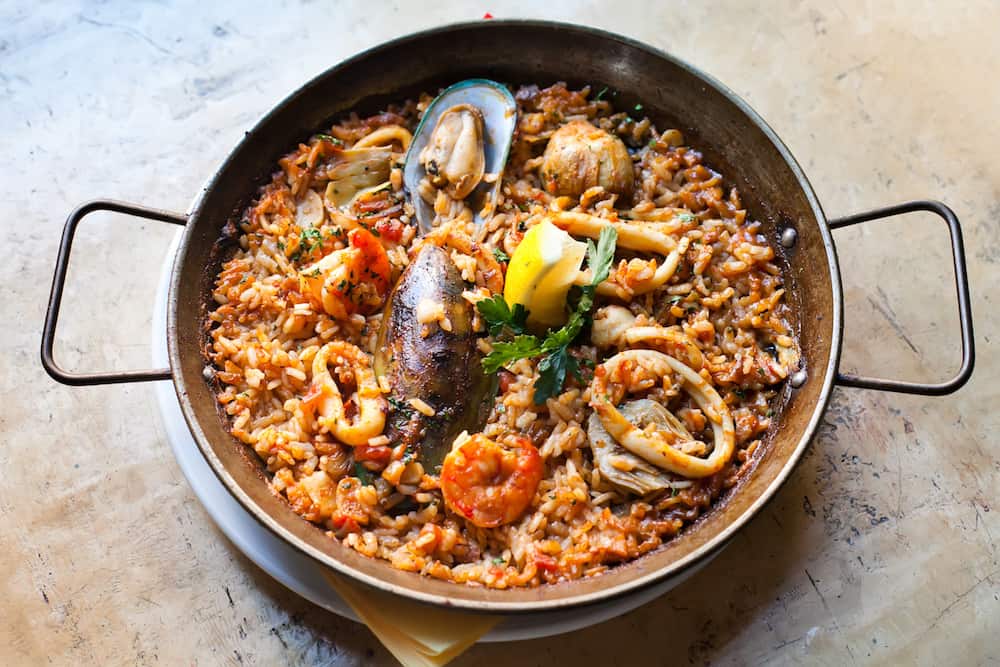
2. Cochinillo in Segovia
This is a delicious local Segovian dish of suckling pig roasted to perfection with crispy crackling skin is a must to try.
The piglets are fed only their mothers’ milk and are slaughtered at the age of 4 to 5 weeks before being sold to restaurants where they are then rubbed with olive oil, garlic, salt and thyme and roasted over a fire for about an hour in a clay dish and then roasted at a higher heat to create the crispy crackling on the skin.
Waiters will usually cut it with a plate to show you just how tender the meat is as it easily falls away from the bone. This dish was one of Ernest Hemingway’s favourites, he wrote about Casa Botin’s cochinillo in his novel: The Sun Also Rises.
The American writer had his very own table at the restaurant and was a fan of this Madrileño classic restaurant. If you can’t make it to Segovia, then you can always savour this delicacy in the world’s oldest restaurant, El Sobrino de Botin, Calle Cuchilleros, 17, Madrid.
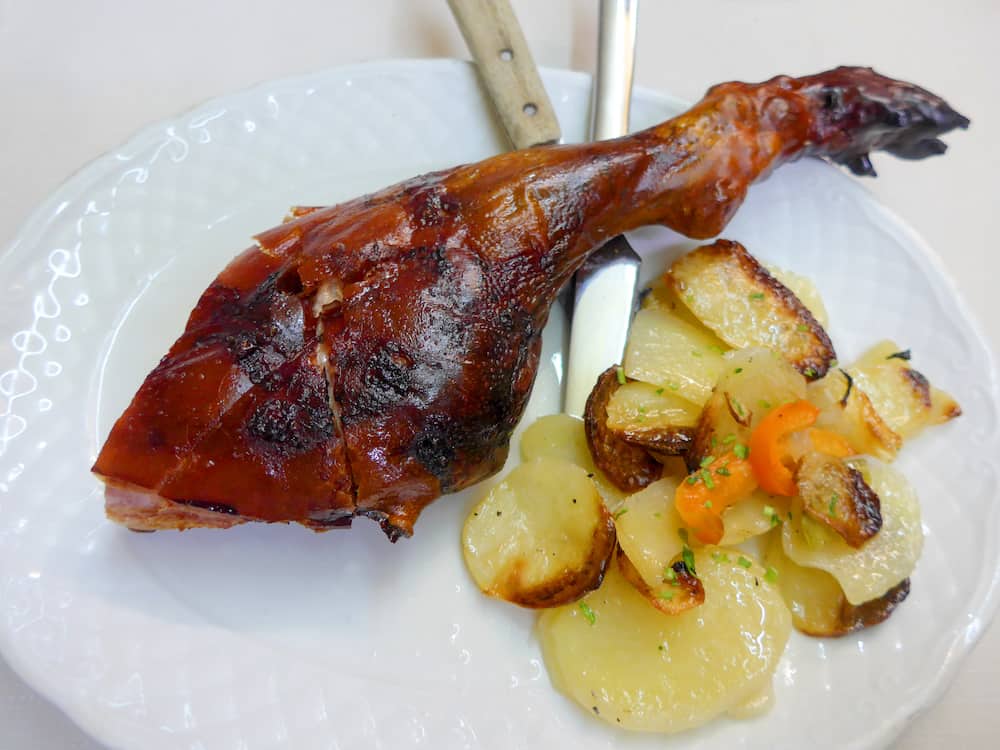
3. Lamb in Sepúlveda
Sepúlveda is a sleepy little village situated near Segovia and is the place to visit if you are on a pilgrimage of Spanish gourmet dishes.
This is THE place to try the most delicious roasted lamb. The areas around Sepulveda are filled with fields of sunflowers nodding in the breeze, and the town itself is considered a “living museum” with perfectly preserved 11th and 12th-century streets.
This village is also home to the first Romanesque church called “El Salvador” which dates back to 1093.
The village makes an excellent pit stop around a road trip of Northern Spain, when you arrive at the restaurant you are not offered a menu, they know that people visit for one thing only: the succulent lamb, served with a generous loaf of bread and a locally harvested tomato salad.
To top it all off, you can also try the famous local dessert, Ponche Segoviano, an incredibly sweet cake made of pastry, almonds, custard and cream that is sure to make your teeth ache. Figón Zute el Mayor Tinín, Calle Lope Tablada de Diego 6, Sepúlveda.
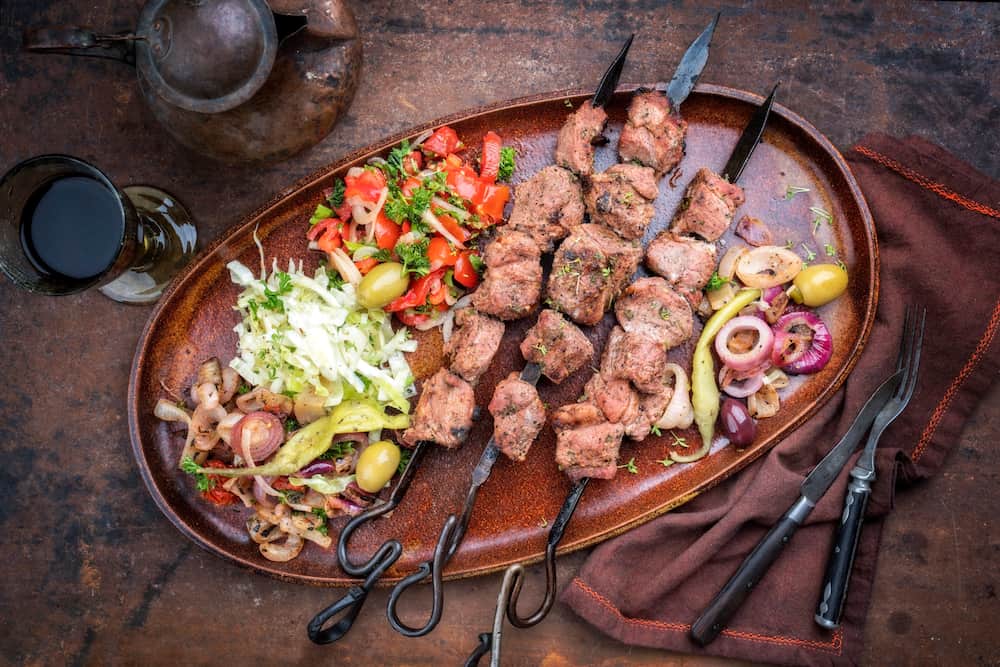
4. Fabada in Asturias
Fabada is very similar to the Madrileño dish cocido, but more delicious! This bean stew is a classic heavy winter dish for the colder climes of the North of Spain and is sure to fill you up.
The secret of the dish all depends on the quality of the beans or “fabes”, and the Spanish take it very seriously, often forking out up to 20 euros for a packet depending on the quality. Other ingredients include morcilla, a blood sausage from the city of Burgos, chorizo, pork shoulder and a generous seasoning of saffron.
It was claimed by some historians that fabada was already in existence in the 17th century though no evidence has ever been presented to confirm this theory. Some historians say that it strongly resembles the French dish Cassoulet that originates from Languedoc and is said to have been introduced to Spain by the French pilgrims that passed through on their pilgrimage on the Camino de Santiago during the middle ages.
This tasty Asturian dish is definitely one to sustain you on your lengthy journey along the Camino de Santiago and is a must-try for all those who visit Northern Spain. In fact, modern gourmands make pilgrimages to Asturias just to try this Asturian classic.
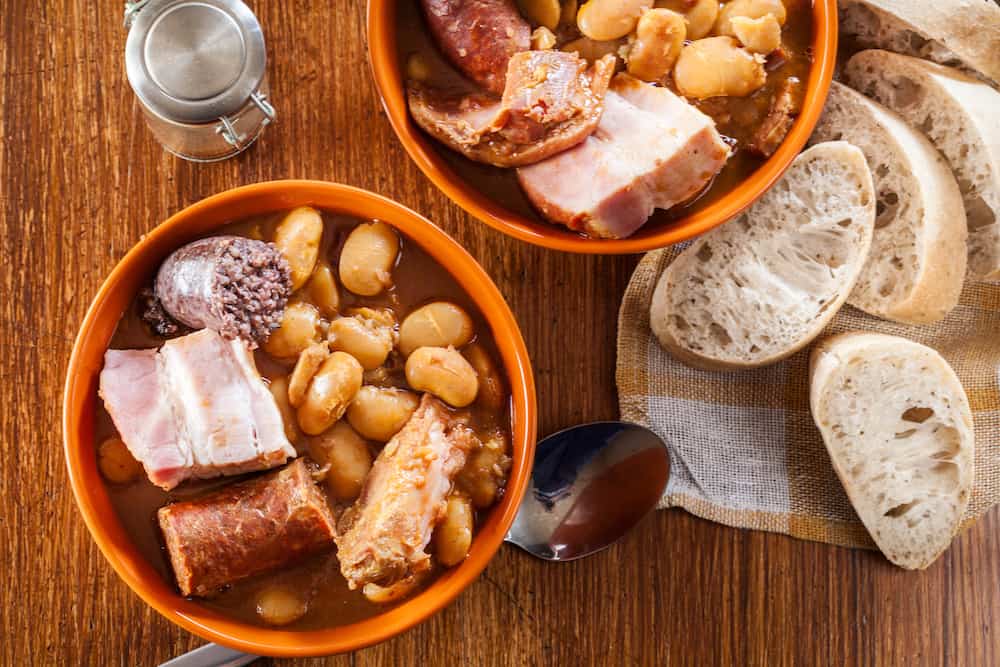
5. Pinchos in Basque Country
The Basque country is stunning and has plenty to offer, one of the most beautiful places to visit in San Sebastian, with its long beaches and venerable dining scene. Missing the sheer quantity of pincho bars on offer is impossible.
Pinchos means “spike” in Basque and is their version of tapas, it usually consists of small pieces of bread topped with delicious morsels of seafood, morcilla or other delicious toppings and skewered together with a wooden stick.
Not content with just ordinary tapas, the different bars created their dishes in miniature and put them on display on the bar so that customers could come along and help themselves to these tasty morsels.
Spain is the king of casual dining, and the best way to experience the Spanish dining experience is to wander from bar to bar, sipping ice-cold beers or wine and sampling the different pinchos on offer. One of the most legendary places to eat pinchos is a small, unassuming bar called Bar Sport, Calbeton Kalea, 10, San Sebastian.
They serve pinchos with a wide variety of seafood including txangurru, a local speciality made of shredded crabmeat cooking in the oven with a golden layer of cheese.
You can eat to your heart’s content in San Sebastian while bar hopping and experience the authentic casual dining of Spain.
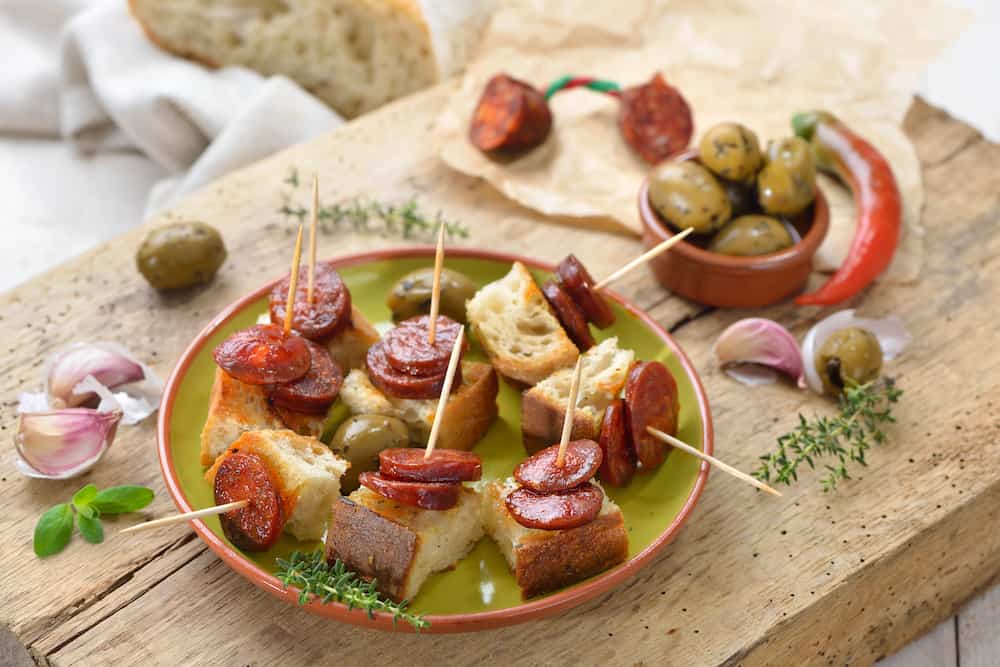
6. Espeto and Pescaito in Malaga
The South of Spain is famous for its fish dishes, and here they love them fried. The most famous dish from Malaga is Espeto, typically found along the Malaga coast.
These are sardines skewered onto a long wooden cane and cooked over a burning fire made of olive wood. If you walk along the seaside towns of Malaga, you will be sure to smell the distinctive aroma of olive wood burning.
Espeto was recognised by UNESCO and added to the list of Intangible Cultural Heritage of Humanity, with the aim of preserving the ancestral knowledge and technique in the preparation of this dish.
This traditional dish has its origins as far back as 1882 and is typically found along the Andalusian coast in beachside restaurants known as “chiringuitos”.
In these restaurants, it is also possible to enjoy the delicacy of fried fish called pescaito. You can find fried octopus (pulpo), fish, squid (puntillitas), sardines (boquerones) and much more.
Pescaito consists of a variety of fish and seafood coated in flour and then deep-fried in olive oil, sprinkled generously in sea salt. Served hot and steaming, it is delicious with a squeeze of lemon and is the perfect accompaniment to a nice cold beer while enjoying the cool sea breeze at a chiringuito on the beach.
Pescaito is said to have originated by the Jews in Andalusia and Portugal in the 16th century, where it was a favourite choice for late breakfast and lunch after services at the Synagogue.
It has also been suggested that pescaito frito was the inspiration for English fish and chips, brought there when Sephardic Jews emigrated and established themselves in England.
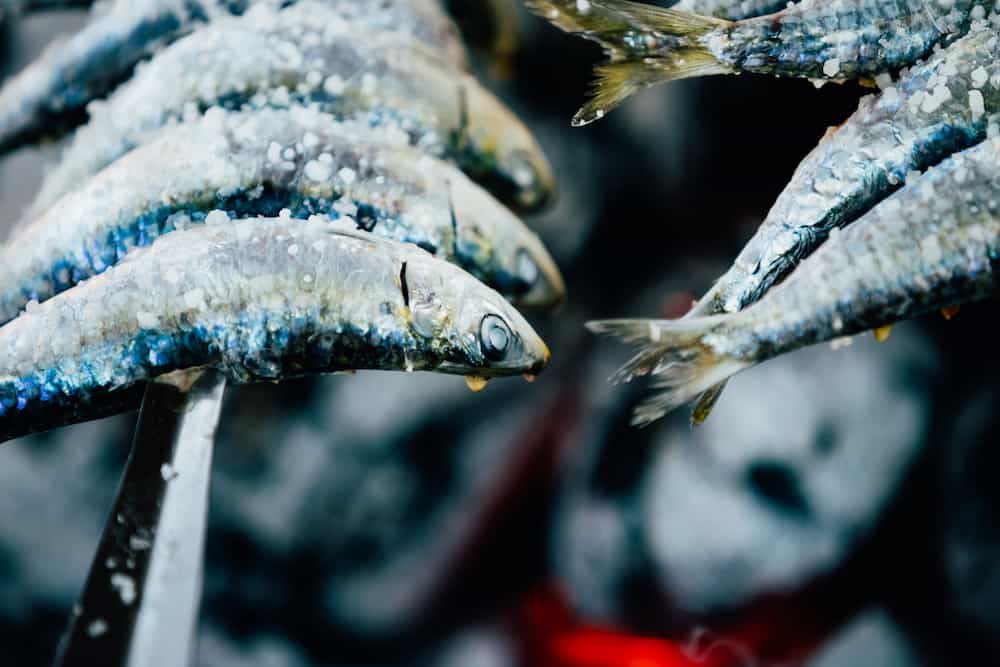
7. Cecina in León
Leon is famous for its cuisine, but especially its cured meat, known as Cecina. Leon is a tapas paradise where bars will serve up free plates of Cecina with the order of every drink in the many tapas bars of the old quarter of the city.
Cecina is meat that is salted and air-dried. The meat ranges from venison to beef to even donkey meat with varying degrees of spice.
The first written references to Cecina can be found in the 4th century BC recipe giving instructions on the traditional curing process which is still followed today in the preparation of the product.
It is said that the Asturs, who were the first inhabitants of Northeastern Spain before the arrival of the Romans, were the first to employ the technique of curing meat, which became known as “Cecina de León.”
This delicious meat is served accompanied by a good red wine, and one of the best places to try it in Leon is Embutidos Entrepeñas, Plaza San Martin 12, Leon. Here you can taste the different world-renowned wines of the region while enjoying this typical Castillian delicacy.
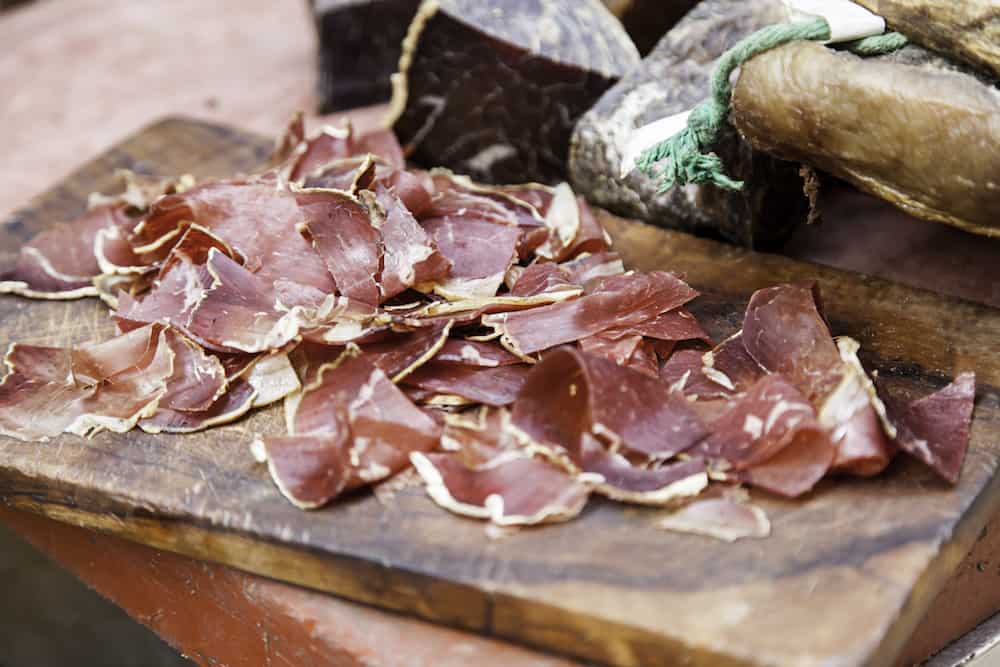
8. Tuna from Barbate, Cádiz
This secret from Spain is little known abroad but is incredibly famous in Japan. In 2012, a Tokyo restaurateur named Kiyoshi Kimura paid Y56.5 million for a Bluefin tuna weighing 269 kg at the famous Tisukiji Fish Market in Tokyo. This Bluefin tuna yielded nearly 10,000 pieces of sushi and was bought from Barbate, near Cadiz in Southwest Spain.
Aside from the beautiful long stretches of beach famous among Spaniards as a summer holiday destination, this area of Spain is well known for its hand caught tuna in Barbate. The tuna is caught by hand using a method called “Almadraba” which has been used for over 3,000 years.
The local fisherman stretches out large maze-like nets from the beach and slowly haul the nets in the form a tightening net until the fish can be pulled out onto the fishing boats.
The tuna is so famous and desirable that Japanese merchants flock to Barbate to wait at the fishing ports for the arrival of the fishing boats where they select the choice pieces, vacuum pack, freeze them and send them straight to Japan by plane.
This tuna is exquisite and melts in your mouth and can be enjoyed in the thin slice as Carpaccio, sashimi or as tartar. It is also wind-dried and cured in salt and turned into Mojama, an incredibly delicious way of eating tuna where thin slices are drizzled with high-quality olive oil and scattered with roasted almonds.
One of the best places to eat this tuna at a fantastic price is in La Fontanilla, Avenida de la Playa, Conil de la Frontera, Cádiz. This restaurant is right on the beach and offers stunning vistas of the Atlantic Ocean, and you can sample tuna dishes starting from 16 euros. A small price to pay for world-renowned tuna.
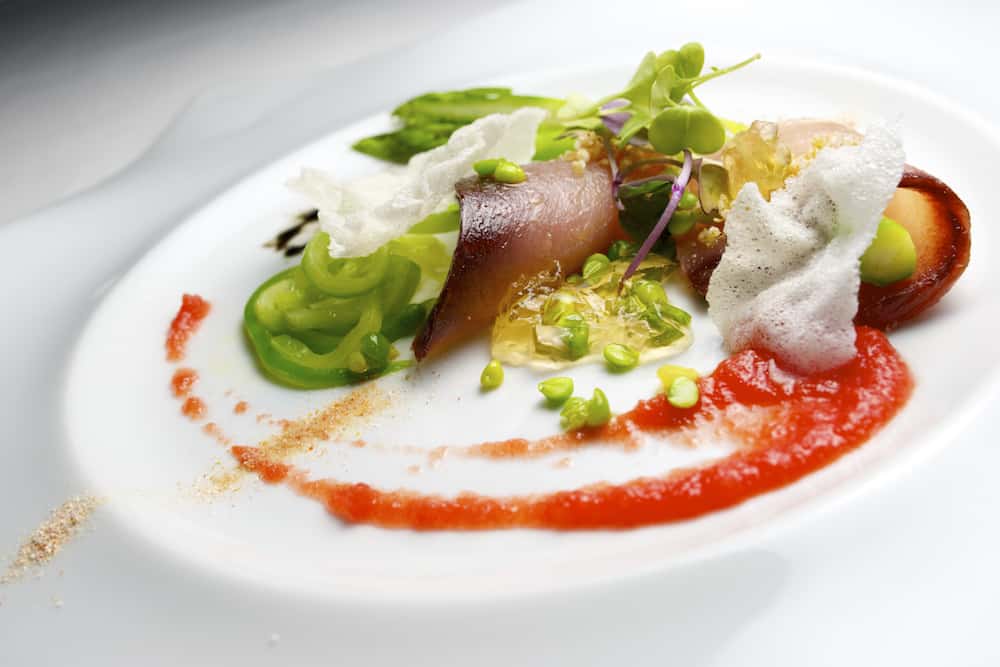
9. Octopus in Galicia
Spain is a haven for seafood lovers, and one dish that is famous all over Spain is Galician octopus, or pulpo a Feira, as it is known in Galician.
The chefs first dip the octopus tentacles in and out of the boiling water three times before boiling the entire octopus inside a copper cauldron.
The goal of dipping the octopus is the curl the tips of the tentacles. Once boiled after 40 to 90 minutes, the octopus is sliced, sprinkled with sea salt and a dusting of sweet and spicy paprika.
Though the thought of octopus may make some people queasy, Spanish people are keen seafood lovers, and it is common to a dozen types of prawns or a huge variation of molluscs on offer in local seafood restaurants.
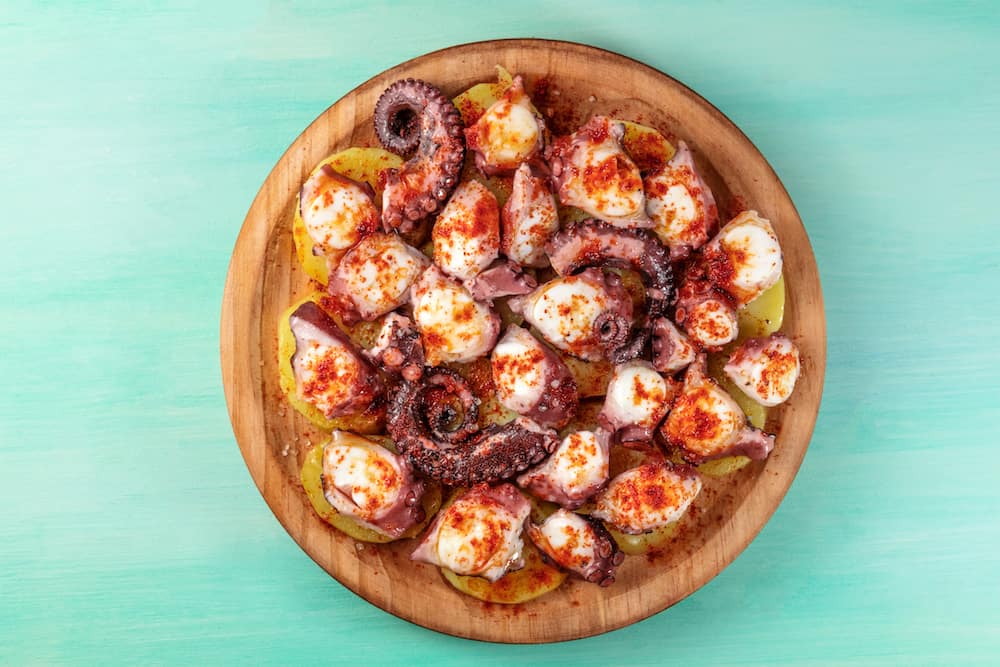
10. Escargots in Catalonia
Last but not least, the little known famous gastronomic specialty of Catalonia: Escargot.
Though France is the place that springs to mind when you mention snails, Catalonia is also famous for its love of snails. So much so that they have an entire festival dedicated to it every year in May.
The festival takes place in Lleida and in 200,000 snail lovers flock their yearly to consume a total of over 12 tonnes of escargot!
The snails are cooked “a la llauna”, which means “with a can”, a shallow roasting tray made of steel placed over a hot grill. The sound of snails popping and hissing as they cook may not be for the faint-hearted, but this process results in perfectly-cooked snails seasoned with olive oil, salt and pepper, tender from cooking in their own natural juices.
To top it off, a dash of wine vinegar and olive oil and garlic and parsley is added at the last moment. The snails are eaten with a toothpick and often served with garlic mayonnaise, or aioli, as an accompaniment.
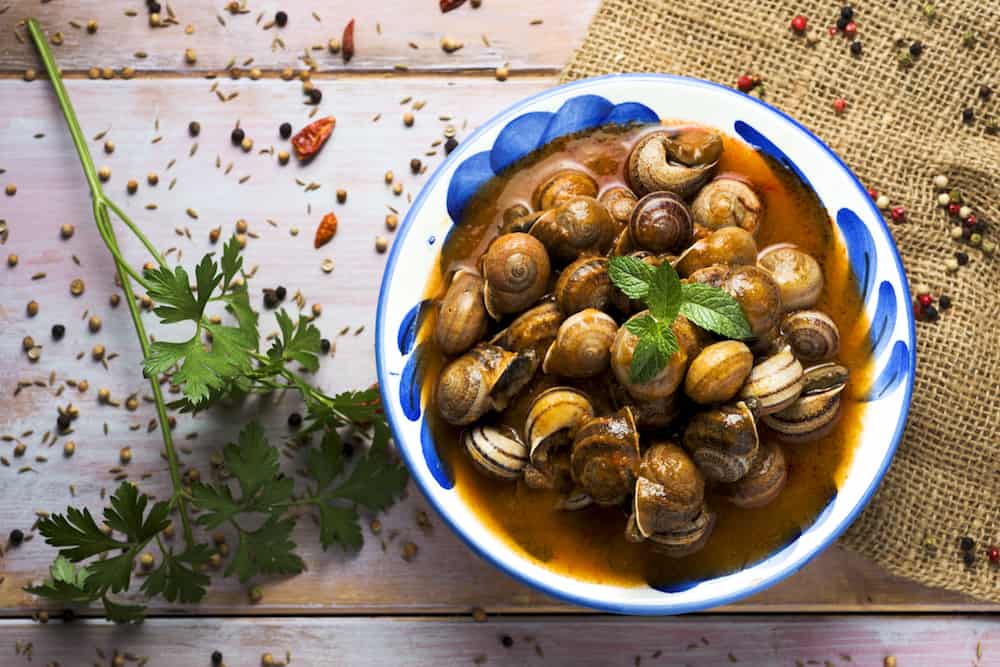
If you’d like to save it for later, please save it to Pinterest.
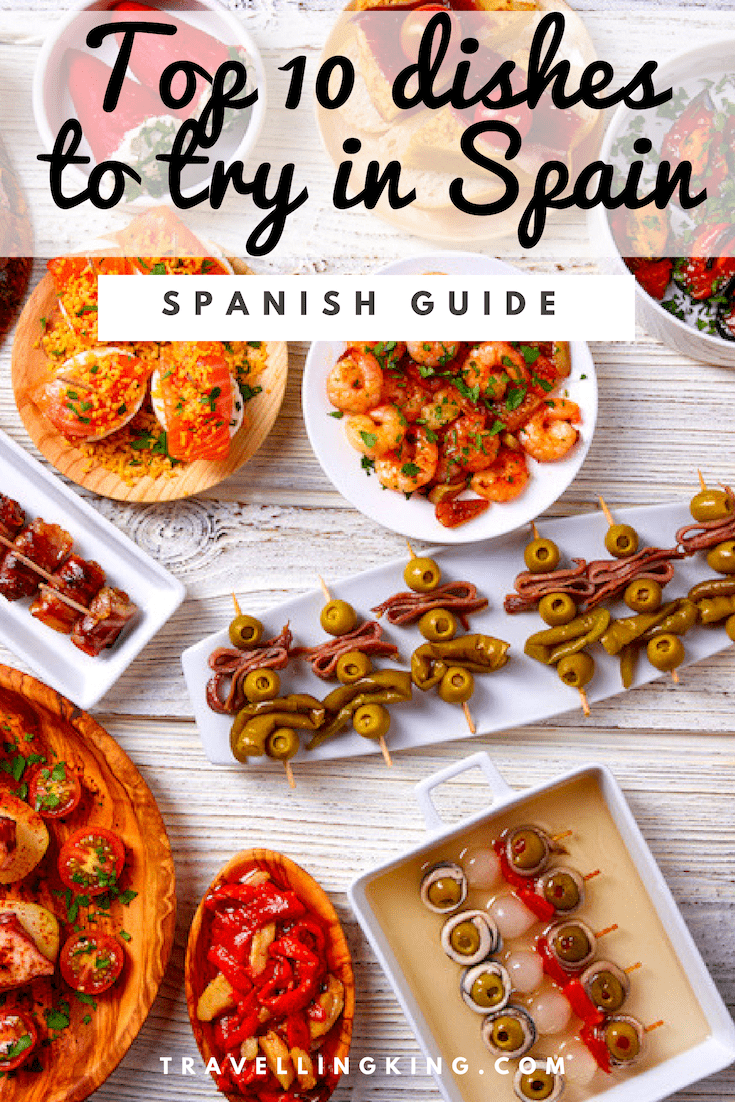
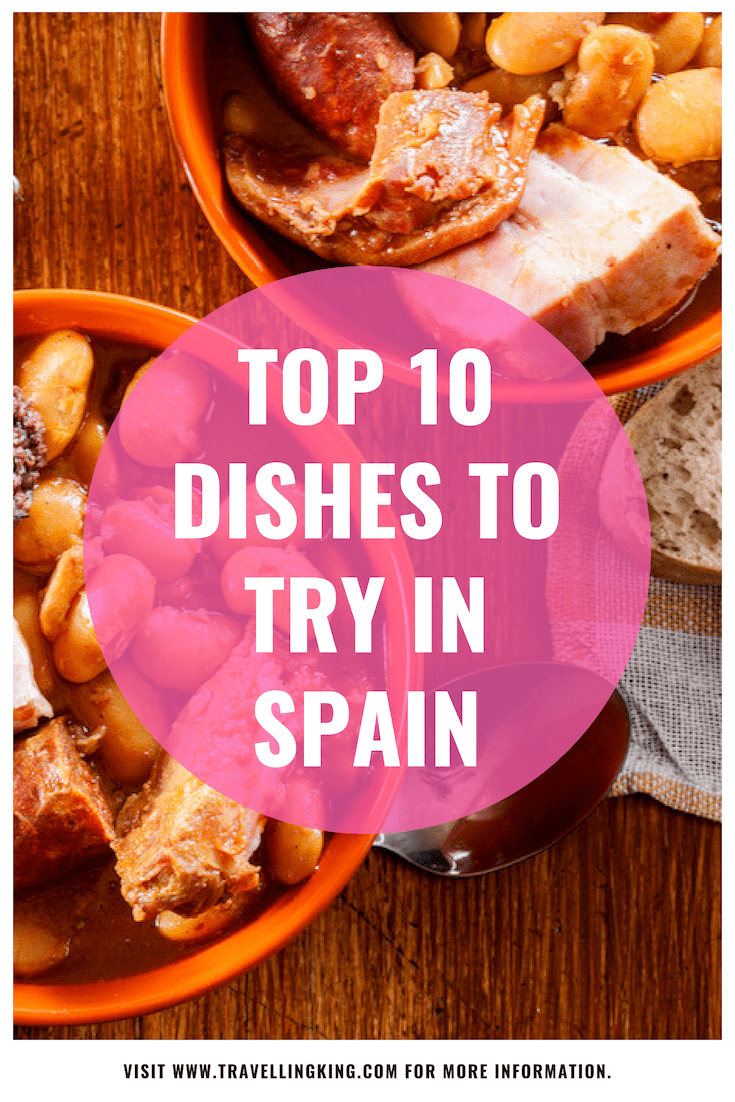
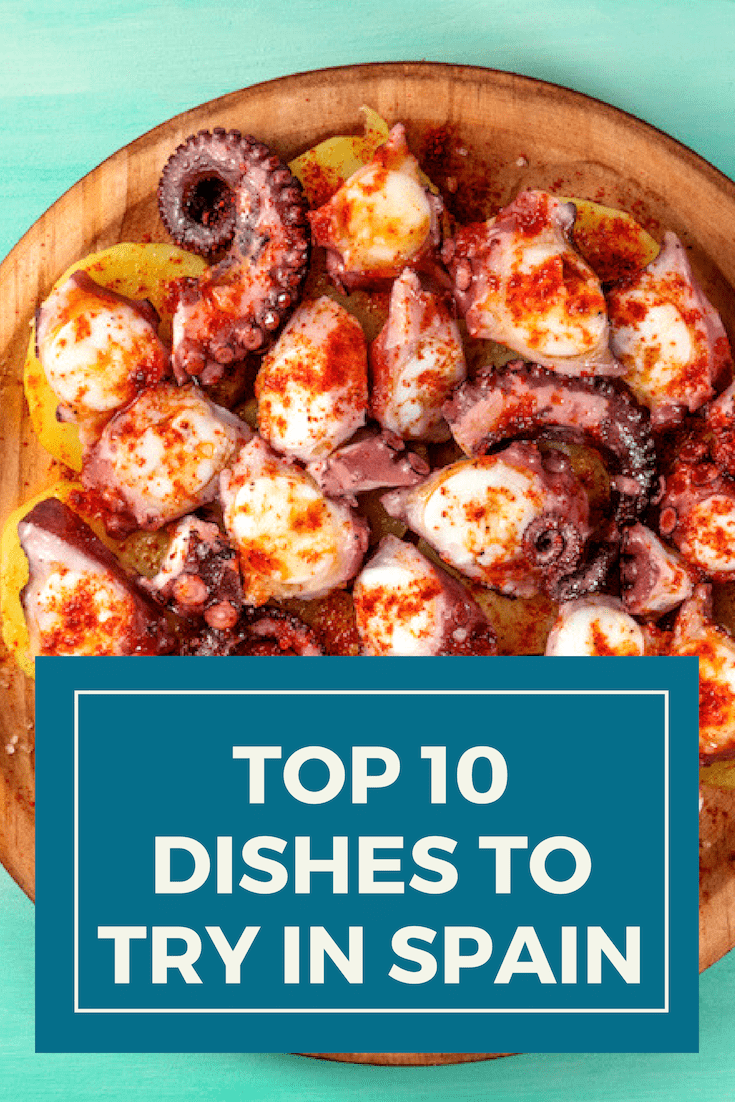



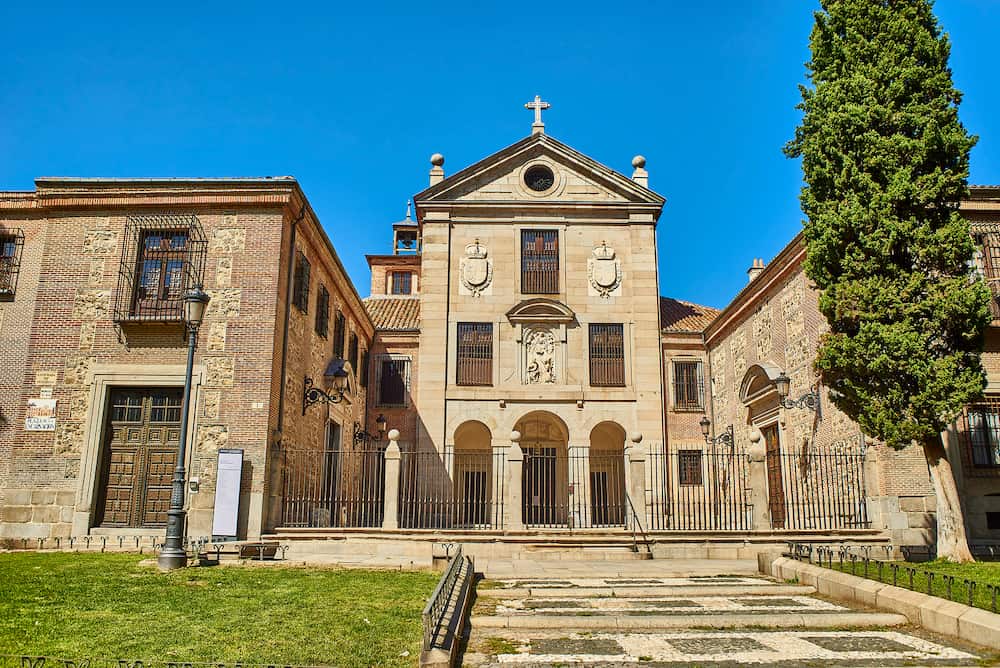

![Where to stay in Ibiza [Best Places to Stay for 2024]](https://www.travellingking.com/wp-content/uploads/2019/09/Ibiza-Ibiza-Cala-de-Sant-Vicent-caleta-de-san-vicente-beach-turquoise-water.jpg)
